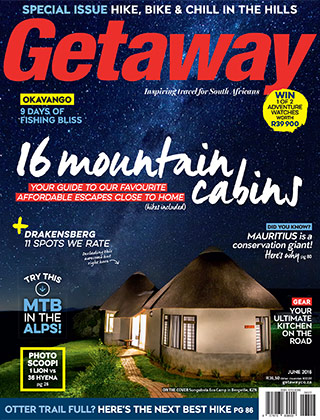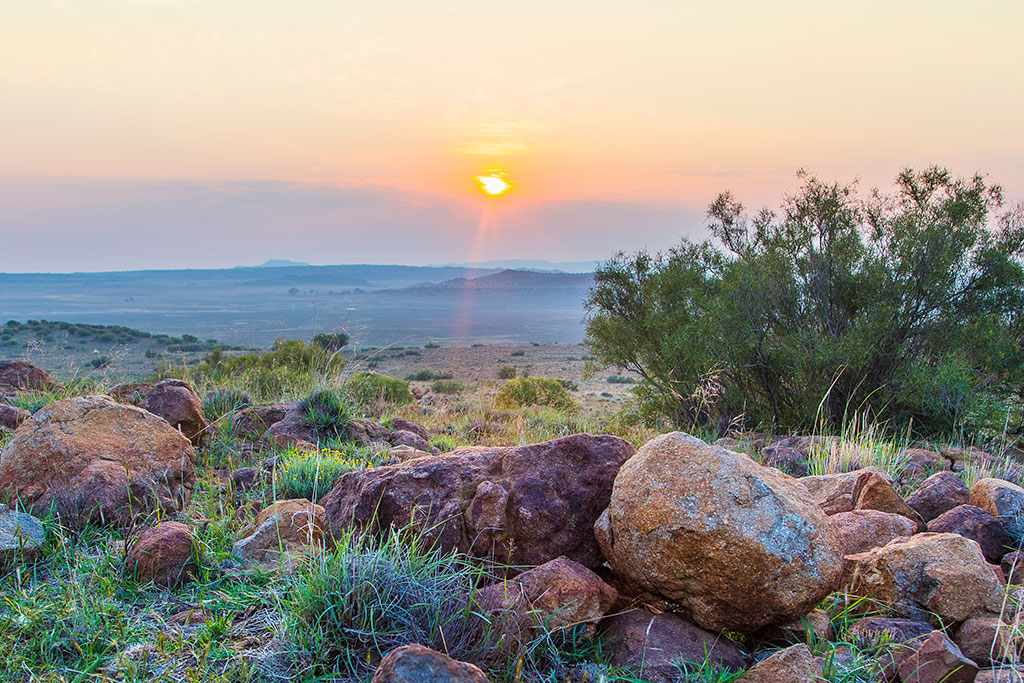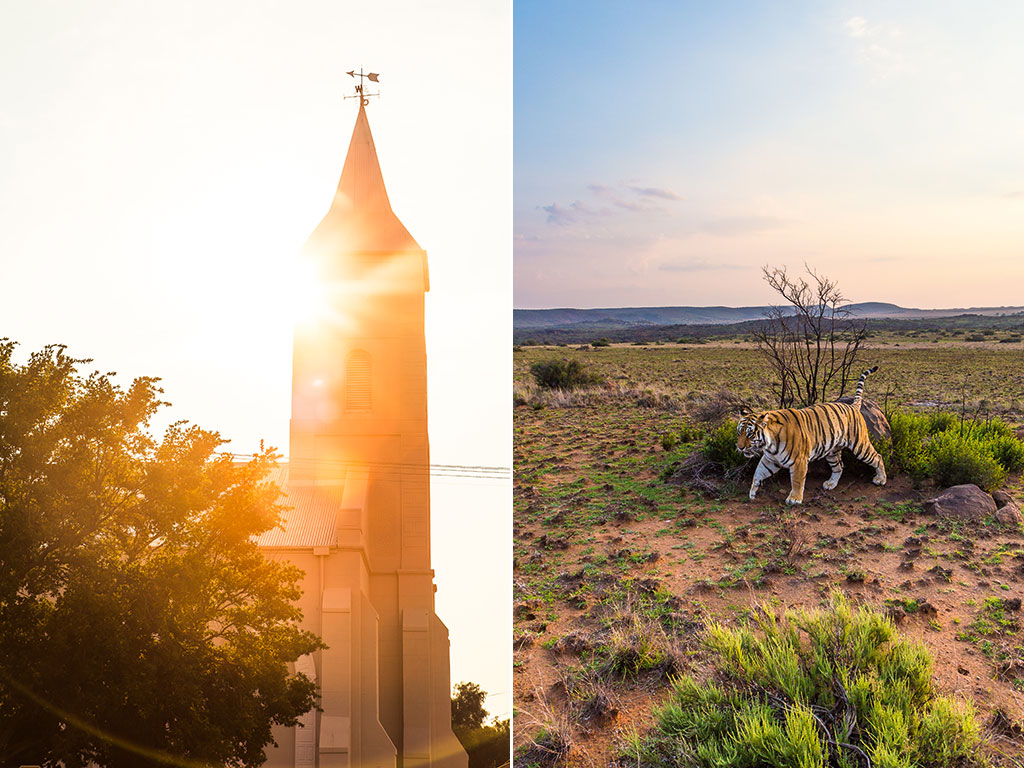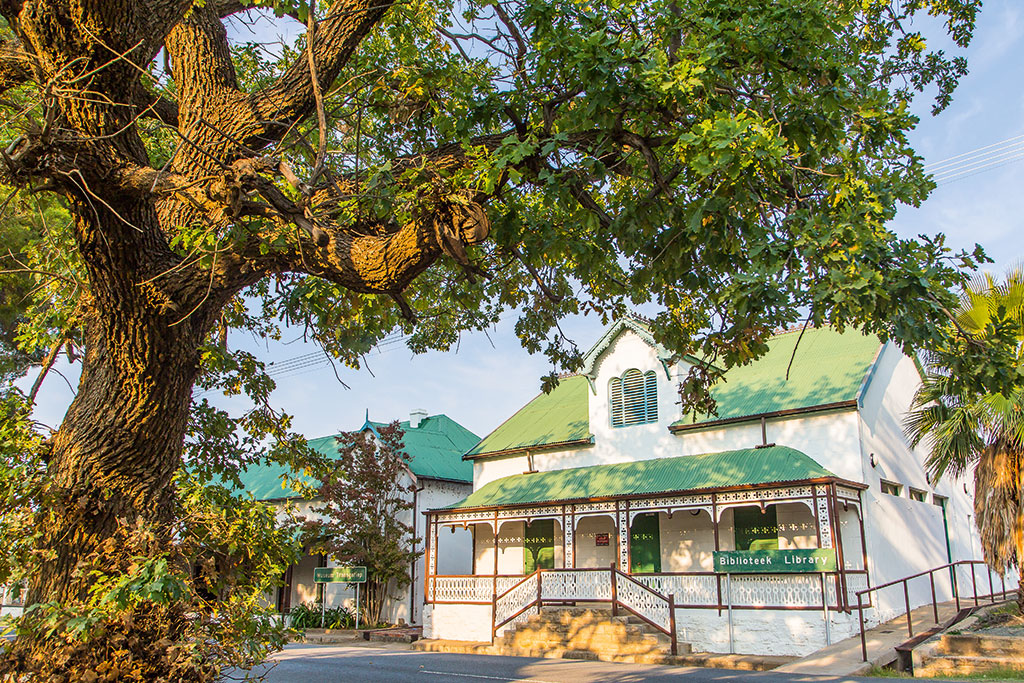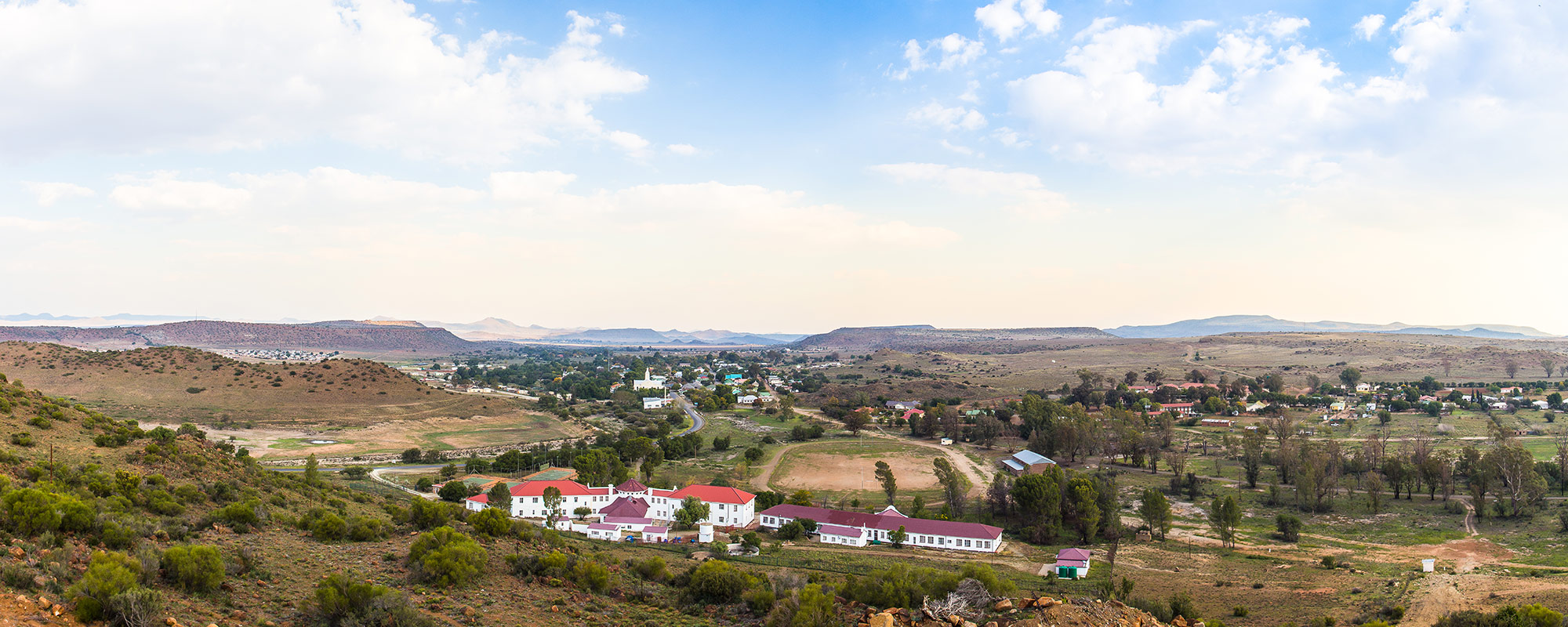For most, Colesberg is the stopover on a journey along SA’s N1. But just a short detour away is a hidden outpost that takes travellers on a journey into the past, shares Naomi Roebert. Photos by Tyson Jopson.
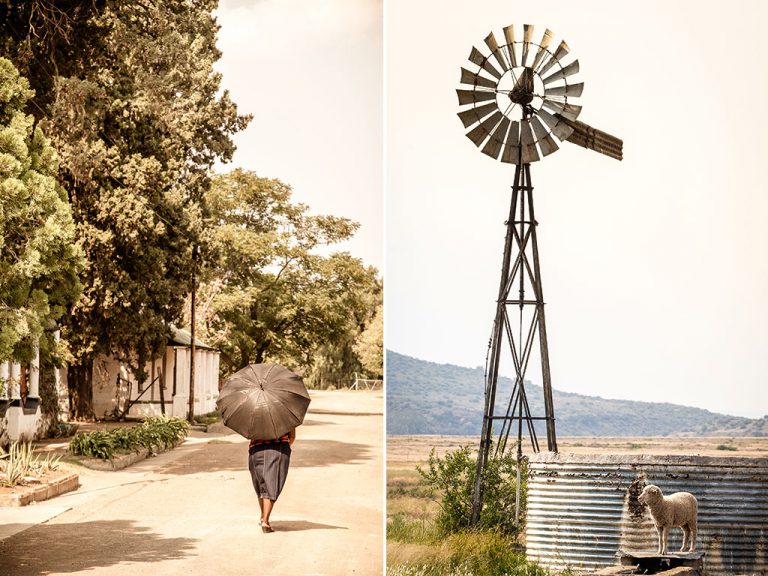
A local woman strolls down Colin Fraser Street where Boer War welfare activist, Emily Hobhouse, once took her evening walks.
I had been dragging down the unending N1, blinking with tiredness, a mirage of Karoo ghosts obscuring my vision. I needed to stop for rest, for sanity. Turning onto the R717, the numbing flatness of the land suddenly burst alive with pyramid-shaped Karoo mountains. The first historical settlement north of the Orange River, this southern Free State town also belongs to the False Karoo, a geographical region of dry scrub that transforms to grassland in times of rain.
As I drift into Philippolis, an immediate sense of stillness overtakes, of slow, quiet lives untroubled by the outside world. On Voortrekker Road, the town’s main street, Victorian houses huddle together under the shade of the great pines. A donkey cart plods by. This is another world, a place time forgot: a living historical photograph preserved in sepia dust.
I know this place well ‒ my parents retired here, escaping busier towns for silence and peace. It didn’t take long for the village magic to creep into me, keeping me spellbound. Philippolis is a place to which you always return. Ask anyone who lives here. No matter how far you stray for work or play, its stars and spoeks draw you back. Before supper I head out to catch the last glimmers of daylight, because the Philippolis evenings are unique, when the soft pink dusk settles on everything like fine powder.
I start down the dirt road of Colin Fraser Street (only four are tarred). There is something in this small dry place that sparks the imagination. It’s what drew well-known SA artist Chris Haw here and inspired a collection of powerful works by local artist Rina Coetzee. Most famously it’s where Laurens van der Post, one of SA’s most renowned authors (and an authority on San culture and passionate conservationist) lived, and wrote. At the far end, gleaming in dark green twilight, is his childhood home. Built in 1874, the house sits in dignified repose beside the street, a fine mix of Cape Dutch and Victorian elements.
Today it’s home to the Heartland and Karoo Institute, founded by University of the Free State professor Doreen Atkinson. The house is perfectly preserved, with thick mud walls, stained glass doors and wooden floors. The institute works to create sustainable community development projects that facilitate the preservation of the Karoo’s heritage. I catch Doreen in the street and pause to chat because conversation is required currency in small towns. ‘Just look at that,’ she says, peering down the sand road through the gloaming, ‘you can almost see Emily Hobhouse taking her evening stroll.’
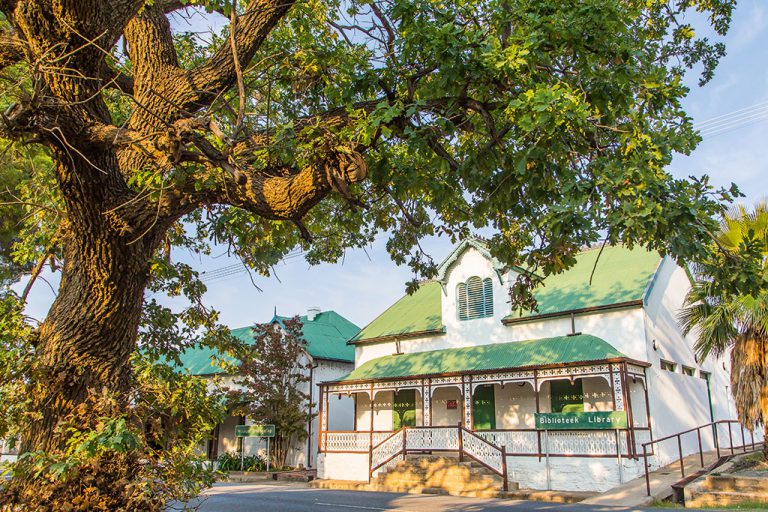
The historical library rests under the shade of an old pine, and this oak tree.
I walk up rubble-strewn Harvey Street and then come back onto Voortrekker Road. Further down the southern stretch is Griqua leader Adam Kok II’s original green-doored house. Opposite is the Emily Hobhouse memorial, a tribute to the Anglo Boer War welfare campaigner and to the central role the town played in that war, when it was captured by the British and came under siege in 1900 during the Boer commandos’ struggle to liberate it.
A few locals are about this evening, buying odds and ends from the Foodzone store, once the site of Hobhouse’s weaving school for destitute Boer girls. Wave, nod, smile, greet. Beyond the store, the road’s uninterrupted line of houses is guarded by the sentinel pines. Where the road curves, the Dutch Reformed Church, consecrated in 1871 on the site of a Griqua church, rises like Lazarus from the dust. Its polished wild olive pulpit was skillfully created without the aid of nails or bolts. Its towering organ has been declared by many visiting musicians to be one of the finest in the land. Today, its bell-ringer is also the town barman.
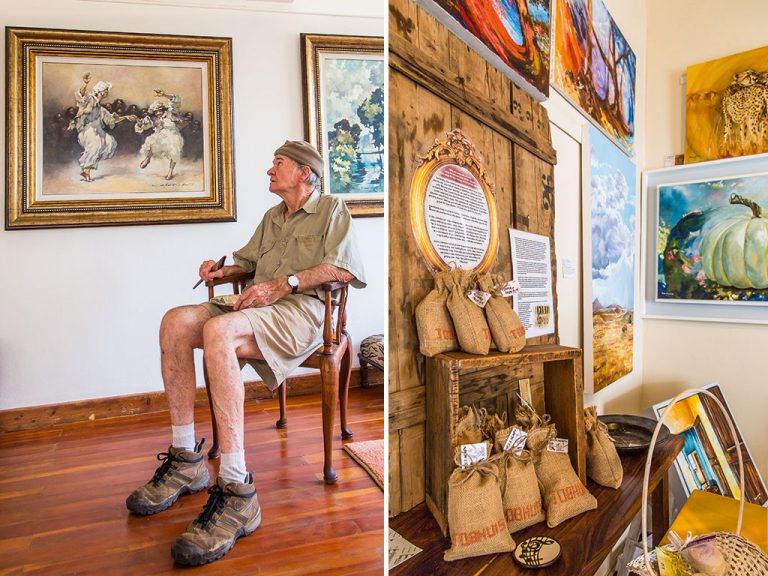
Well-known South African realist impressionist Christopher Haw welcomes visitors to his gallery at his charming Karoo home.
Opposite the church, a small hill – or the Koppie, as the locals call it – presides over a small square where a weekend farmers’ market brings people together while the local Boere Orkes band makes merry on banjos and accordions. Beside the square is the Museum Transgariep, which houses an original horse mill and where, not too long ago, the locals made vicious witblits in the still-functioning stookketel (distilling kettle). On the Koppie the rust-mottled naval cannons, donated to the Griquas by the Cape Colony, gaze over the quiet reaches that no longer ring with the echoes of battle. Now the land is at peace.
The evening star appears. I walk up into Justisie Street, a neat collection of real-life doll houses: typical Karoo flat-roof styles with moulded cornices and Victorian houses with pitched roofs and verandas trimmed with ornamental woodwork. Some are perfectly restored, others in states of beautiful disrepair. At the end of the street I am suddenly confronted by veld, by the flowing silver slopes and the simple graveyard where the Boers, Englishmen and Griquas find rest together.
Darkness falls quickly and the Karoo’s magic is conjured in the cauldron of stars, a sky thick with cosmic sorcery. The hush of night is broken by the murmur of moving grass, the call of an owl, a neighbour’s laugh. Life is quiet beneath the sparkling sky: evenings spent stargazing on stoeps, the quiet chink of beer bottles, braai smoke mingling with the smell of dust and veld.
I walk home under the warm street lights. Later I’ll fall asleep to the sound of the nearby wind pump, its strange echo like the sound of the earth’s heartbeat.Morning comes and I have a quick coffee on the stoep of Ko-Ma-In. The sheep farmers ‒ the keepers of this bucolic idyll ‒rattle by in bakkies. A cat from the adjacent house slinks up to stroke my ankle, a passing farmer waves. The N1 awaits and the cities at either end of it feel unreal. This place has the power to pull you back in time, while not really moving much at all. I rattle out onto the road, that strange Karoo wind already beckoning me to come back.
Plan your trip
How to get to Phillipolis
If you’re driving on the N1 from Cape Town to Johannesburg, turn onto the R717 at Colesberg and drive for 64 kilometres until you get to Philippolis. If you’re driving from Johannesburg to Cape Town, turn onto the R717 at Trompsburg and travel for 55 kilometres to reach the town.
Need to know
If you’re coming from Colesberg, there are potholes before the Orange River so be sure to drive slowly. Fill up with petrol before you get to Philippolis, either at Colesberg or Trompsburg, because the two local stations often run dry. Foodzone is the place for the odd grocery ‒ the nearest OK Grocer is in Colesberg. If you’re planning on self-catering, stock up on food before you arrive.
Things to do in Phillipolis
Discover tigers at Tiger Canyons. This reserve was established by renowned documentary film-maker John Varty to rehabilitate endangered cats in the African wilds. The ultimate goal for John is to create an alternative, thriving population in Africa as a solution to the problem of dwindling tiger numbers in Asia. Three-to four-hour tours in the mornings and afternoons take visitors through the reserve where you’re guaranteed to spot one of the tigers. Tours include an educational talk and breakfast at a platform overlooking the canyons or dinner at the lodge. From R1600 per person.
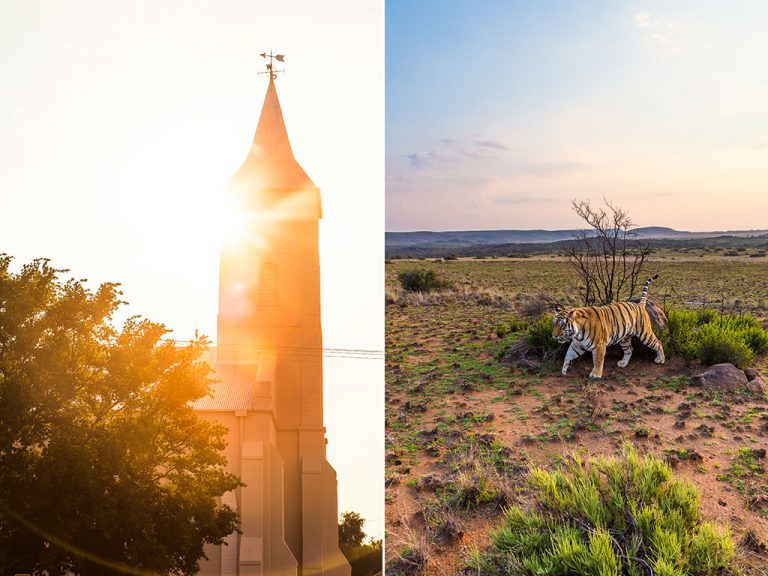
Appearing like a strange illusion, a tiger paces the wide expanse of conservationist John Varty’s rehabilitation sanctuary at Tiger Canyons
Find inner strength at Jobhuis. The gallery permanently exhibits 25 paintings by local artist Rina Coetzee, inspired by the Book of Job and Lamentations. The visitor is taken on a journey of self- reflection in a powerful tribute to overcoming loss and depression. Entrance is free.
Visit the Laurens van der Post Memorial Centre. Some of the features include a wall in which his ashes are lodged, a display of the author’s original study and a labyrinth. There is also a restaurant and guest house on site. Entrance is free.
Visit the Emily Hobhouse Memorial Garden on an evening stroll through town. It’s diagonally opposite the original home of Adam Kok II, which is now a studio and gallery for resident pewtersmith Jann Morrison. Contact them on 0517730041.
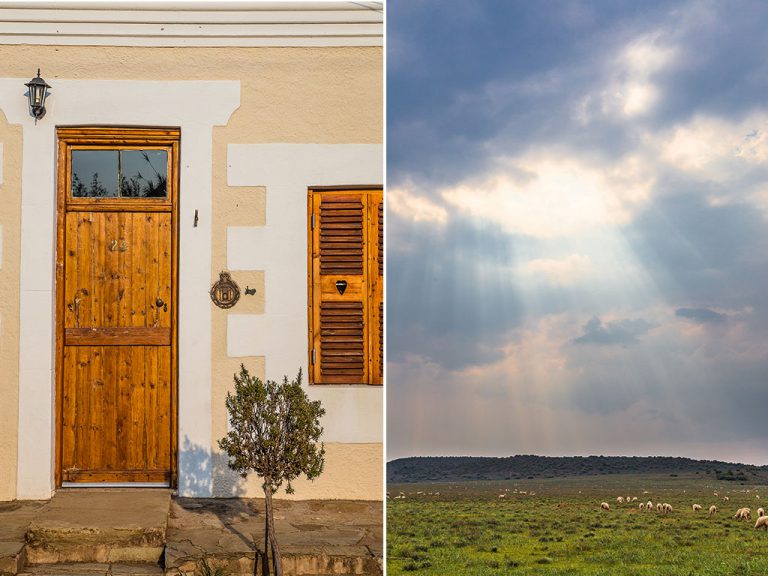
Bookshops and quaint afternoons on the veld in Philippolis.
Places to stay in Phillipolis
Starry Nights Karoo Cottages are five perfectly restored historical homes with wooden floors, Victorian bathtubs, quaint stoeps and tranquil gardens. R700 (sleeps two). 0517730063, starrynights.co.za
Die Anker Guesthouse is a relaxed family-run operation a stone’s throw from Laurens van der Post’s original home. The cosy rooms each have a bathroom and kitchenette and the front porch overlooking the road invites long, lazy afternoons. Self-catering from R400 (sleeps three). Single rate is from R250 per person. 0825074155, [email protected]
Where to eat in Phillipolis
For all dining in Philippolis, pre- booking is essential, as it’s usual for restaurants to close on quieter nights.
Sielskos is situated in the garden of the Laurens van der Post Memorial Centre and serves beautiful boerekos. It’s especially pleasant in the evening when the fairy lights twinkle in the garden and travellers discuss how they ended up in Philippolis. Meals are from R50. 0738786820.
Oom Japie se Huis is tucked inside a secondhand bookshop which is meticulously stocked by resident book lover Richard Proctor-Sims. Try the locally sourced Karoo lamb and make sure to follow up with a nightcap in the heavy wooden bar, where the English gentleman regales his guests with marvellous tales. The lamb main course costs R110. 0517730050.
Ko-Ma-In is a lovely daytime cafe that serves wholesome breakfasts and light lunches. It has a quaint porch which is a great spot to relax, people-watch and let the slow-passing country life and go by. Meals are from R60. 0517737072.
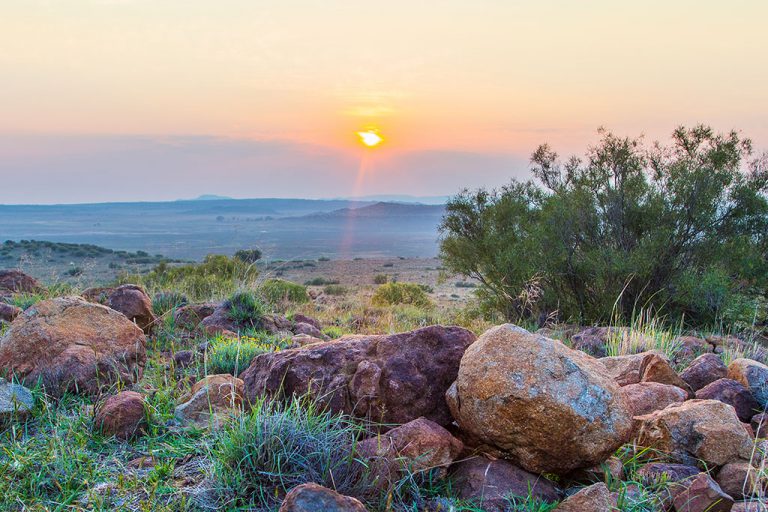
The Karoo sunset rays.
Read the full story in the June 2016 issue of Getaway magazine.
Our June issue is packed full of great winter holiday ideas. On shelves from 23 May.
